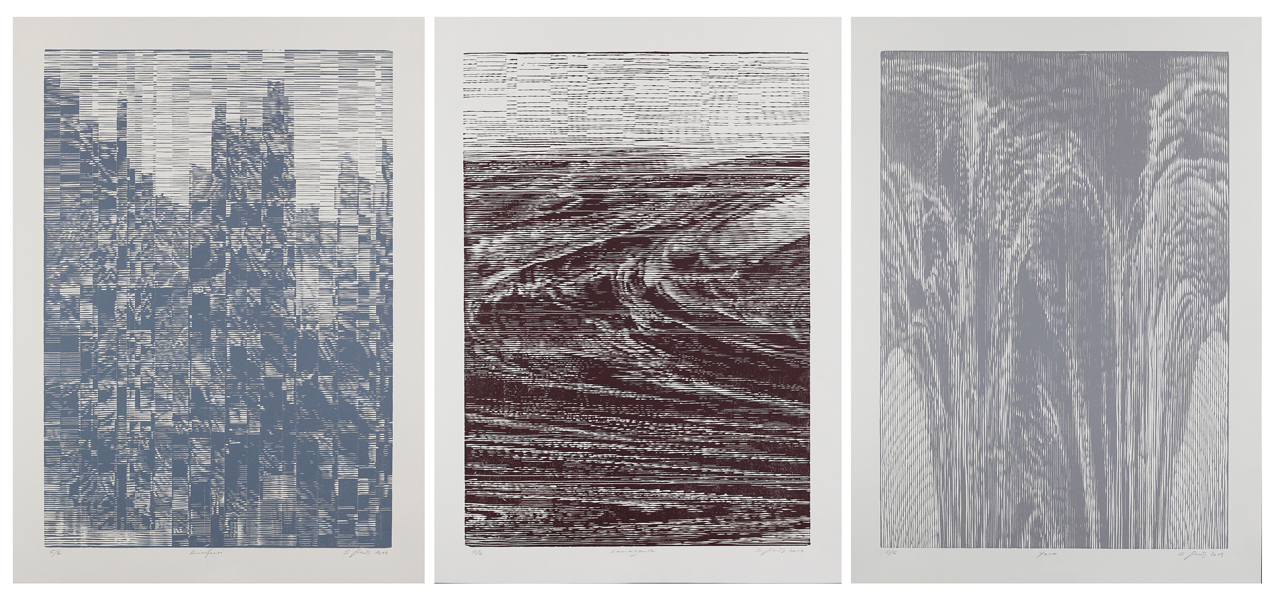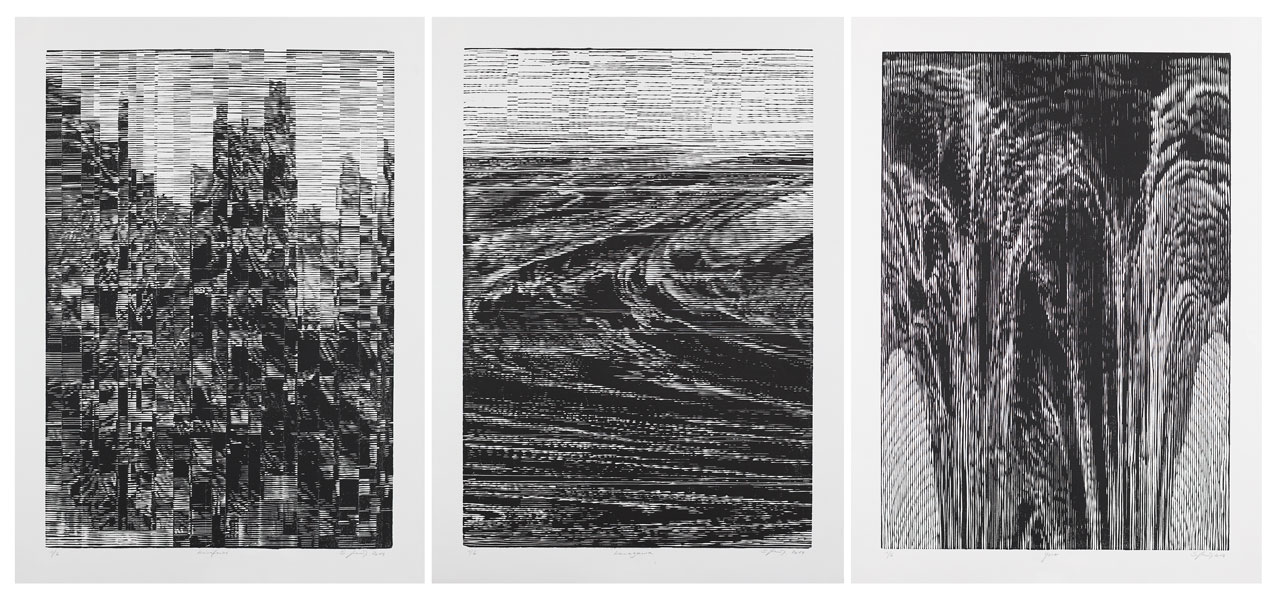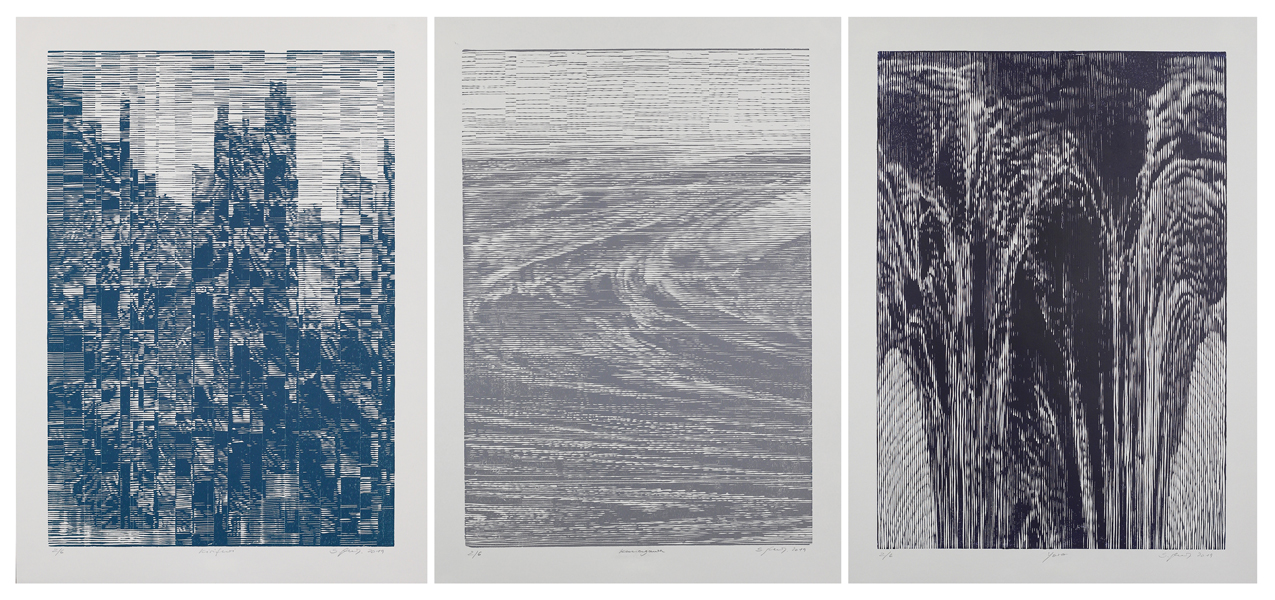
©2019 Stefan Osnowski
left: "Kirifuri" - middle: "Kanagawa" - right: Yoro "
The title of this series of 3 woodcuts refers, on the one hand, to the classical genre of the „Ukijo-e" (Flowing World), a collective name of Japanese painting and printmaking, on the other hand also to the element of water in general. In their respective design, composition, specific graphic means and finally their individual titles each individual graphic alludes to one of the 3 well-known woodcuts by Katsushika Hokusai: "Kirifuri Waterfall", "The Great Wave of Kanagawa" and "Yoro Waterfall ".

©2019 Stefan Osnowski

©2019 Stefan Osnowski
The basic graphic idea of this print series is that of image manipulation and the associated critical questioning of the visible: To what extent can a new visibility in the midst of the virtualized visible rediscover the artistically "invisible"?
With the aid of image generators various digital photographs of water surfaces were manipulated on the computer and prepared for the woodcut. The resulting motifs were then translated on the wooden plate into a simple linear code and manually cut into the wood: Horizontal and vertical lines in precise, constant intervals form the basic graphic structure. Through a variety of cut openings, partially closed, partially open, thereby forming the final print a wide range of different light and dark tones, which produce a coherent image when viewing. The actual printing is done manually, without the use of machines or presses, using only a large glass lens.
Nowadays we live in a world of hypertrophic vision. Our vision is overshadowed by the flood of images with digital designs: filters automate perception and create synthetic (virtual) sensory worlds. Instrumental visual aids replace direct visual perception through the "skopian", industrialized and technical vision which is trained in artificial sight. The mechanization of the image and visual conditioning, which was laid out in the history of civilization, today finds its contemporary equivalents.
Starting with the fixed visibility of the classical picture leading to both the manipulable visibility of the digital image and the interactive visibility of the computer simulation, the visible has become dynamic and virtualized. The visible on the screens becomes so independent and uncontrollable that it is considered a reality. The images considered as informative representations of reality change their ontological status and mutate into a substitution of reality.
